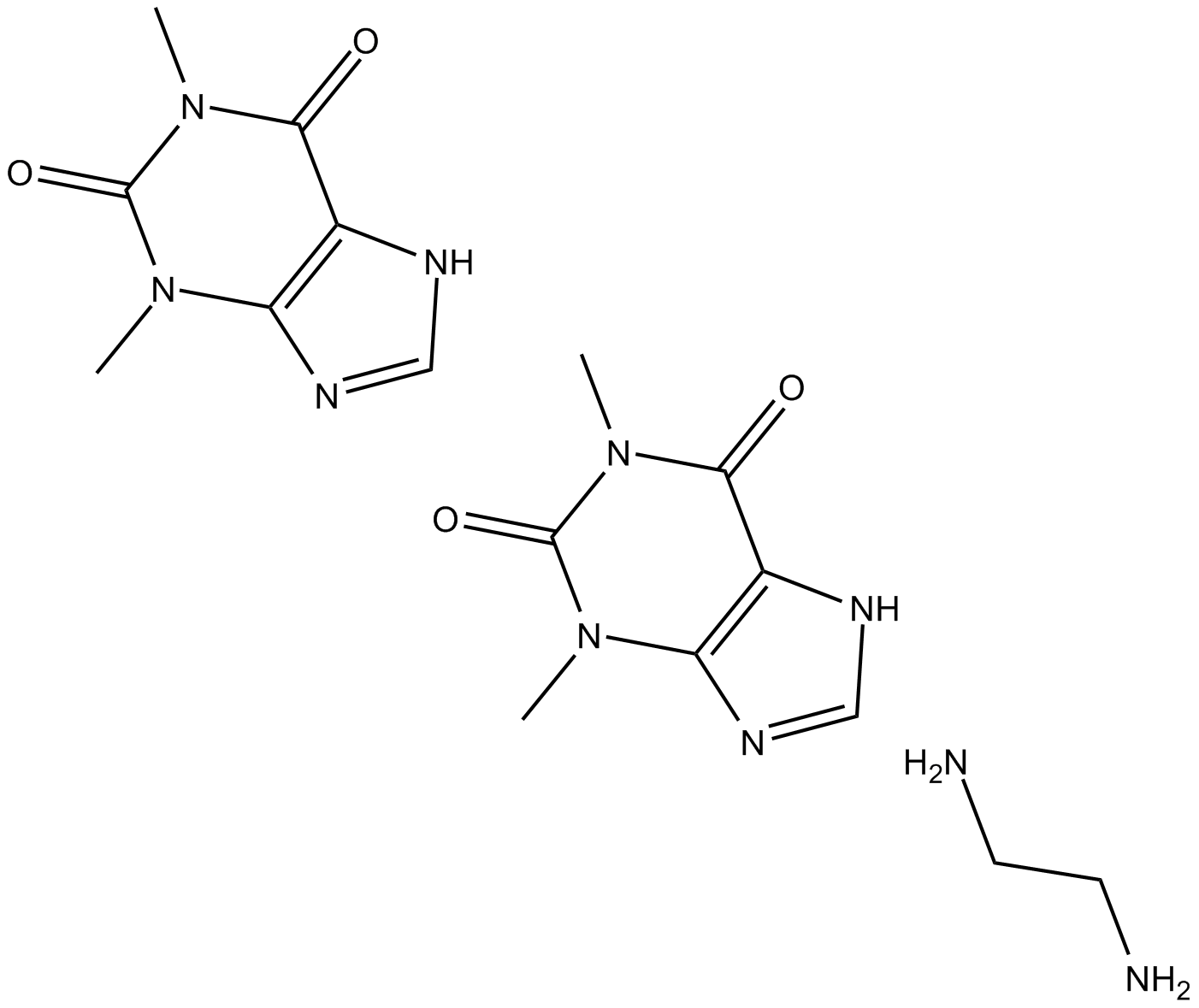Aminophylline |
| Catalog No.GC12764 |
A phosphodiesterase inhibitor and adenosine receptor antagonist
Products are for research use only. Not for human use. We do not sell to patients.

Cas No.: 317-34-0
Sample solution is provided at 25 µL, 10mM.
Aminophylline is a competitive nonselective phosphodiesterase inhibitor that is used to treat airway obstruction from asthma or COPD.Target: PhosphodiesteraseAminophylline is a compound of the bronchodilator theophylline with ethylenediamine in 2:1 ratio. The ethylenediamine improves solubility, and the aminophylline is usually found as a dihydrate. Aminophylline is less potent and shorter-acting than theophylline. Its most common use is in the treatment of airway obstruction from asthma or COPD. It is used off-label as a reversal agent during nuclear stress testing. Aminophylline is a nonselective adenosine receptor antagonist and phosphodiesterase inhibitor.Adenosine is an endogenous extracellular messenger that can regulate myocardial oxygen needs. It acts through cellular surface receptors which effect intracellular signalling pathways to increase coronary artery blood flow, slow heart rate, block atrioventricular node conduction, suppress cardiac automaticity, and decrease β-adrenergic effects on contractility. Adenosine also antagonizes chronotropic and ionotropic effects of circulating catecholamines. Overall, adenosine decreases the heart's rate and force of contraction, which increases blood supply to the cardiac muscle. Given specific circumstances this mechanism (which is intended to protect the heart) may cause atropine-resistant refractory bradyasystole. Adenosine's effects are concentration-dependent. Adenosine's receptors are competitively antagonized by methylxanthines such as aminophylline. Aminophylline competitively antagonizes the cardiac actions of adenosine at the cell surface receptors. Thus, it increases heart rate and contractility.
References:
[1]. Essayan DM. Cyclic nucleotide phosphodiesterases. J Allergy Clin Immunol. 2001 Nov;108(5):671-80.
[2]. Daly JW, et al. Adenosine receptors: development of selective agonists and antagonists. Prog Clin Biol Res. 1987;230:41-63.
Average Rating: 5 (Based on Reviews and 30 reference(s) in Google Scholar.)
GLPBIO products are for RESEARCH USE ONLY. Please make sure your review or question is research based.
Required fields are marked with *




















